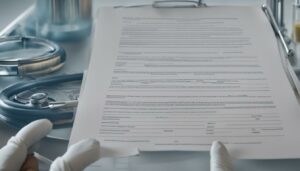Introduction
Have you ever been injured by a defective product? If so, you know firsthand the physical, emotional, and financial toll that can result. In the United States, product liability law is designed to protect consumers like you from the harm that can result from defective products. But understanding this area of law can be complex, with legal jargon and confusing regulations that can make it difficult to know where to turn for help.
That’s where we come in. I’ve created this comprehensive guide to product liability law in the US. Whether you’re a consumer who has been injured by a defective product, a business owner who wants to ensure your products are safe, or simply someone who is interested in this area of law, this article provides valuable insights and information. So, let’s dive in and explore the ins and outs of product liability law in the US.
Types of Product Defects
A product defect can arise in any stage of the product’s design, manufacture, or distribution. There are three main types of product defects that can lead to liability: design defects, manufacturing defects, and marketing defects.
A design defect occurs when a product is inherently dangerous due to a flaw in its design. For example, a car that is prone to tipping over because of a high center of gravity may have a design defect.
A manufacturing defect occurs when a product is improperly manufactured, resulting in a defect that makes the product dangerous. For example, a child’s toy that has sharp edges due to a manufacturing defect can be dangerous.
A marketing defect occurs when a product is marketed in a way that fails to warn consumers about the risks associated with its use. For example, if a drug company fails to warn consumers about the potential side effects of a medication, they may be liable for any injuries caused by the drug.
Legal Standards for Liability
In order to establish liability in a product liability case, the plaintiff must prove that the product was defective and that the defect caused their injuries. There are three legal standards that may be used to determine liability: strict liability, negligence, and breach of warranty.
Strict liability means that a manufacturer can be held liable for injuries caused by their defective product, even if they were not negligent in designing, manufacturing, or marketing the product. In a strict liability case, the plaintiff must prove that the product was defective and that the defect caused their injuries.
Negligence requires the plaintiff to prove that the manufacturer was negligent in some way, such as failing to adequately test the product or failing to warn consumers about the risks associated with its use. In a negligence case, the plaintiff must prove that the manufacturer breached their duty of care and that the breach caused their injuries.
Breach of warranty occurs when the manufacturer breaches a warranty, either express or implied, that the product was safe and fit for its intended use. In a breach of warranty case, the plaintiff must prove that they relied on the manufacturer’s warranty and that the breach caused their injuries.
Types of Damages
If a plaintiff can establish liability in a product liability case, they may be entitled to various types of damages, including economic and non-economic damages.
The damages that you can recover in a product liability case will depend on the specific facts of your case. In general, damages in product liability cases are intended to compensate you for the harm that you have suffered as a result of a defective product. Damages can include:
Medical expenses: You can recover the cost of medical treatment that you have already incurred, as well as the cost of future medical care that you will need as a result of your injuries.
Lost wages: If you were unable to work as a result of your injuries, you can recover the wages that you lost during your recovery period.
Pain and suffering: You can recover damages for the physical and emotional pain and suffering that you experienced as a result of your injuries.
Disfigurement and disability: If your injuries have resulted in disfigurement or disability, you can recover damages for the impact on your quality of life.
Loss of consortium: If your injuries have had a negative impact on your relationship with your spouse, you may be able to recover damages for loss of consortium.
Punitive damages: In some cases, you may be able to recover punitive damages, which are intended to punish the manufacturer for particularly egregious conduct.
The amount of damages that you can recover will depend on the severity of your injuries, the cost of your medical treatment, and the impact on your life. It is important to consult with an experienced product liability attorney who can help you evaluate the potential value of your case.
How to file for a product liability case?
To file a product liability case, you should consult with an experienced product liability attorney in your area. Your attorney can help you gather evidence, identify the responsible parties, and file a complaint in court. In general, the process of filing a product liability case involves:
Consultation with an attorney: The first step is to find a product liability attorney who can evaluate your case and advise you on your legal options.
Investigation: Your attorney will investigate the product and the circumstances of your injury to gather evidence to support your case.
Identifying responsible parties: Your attorney will identify all potentially responsible parties, including the manufacturer, distributor, and retailer.
Filing a complaint: Your attorney will file a complaint in court, outlining the facts of your case and the legal basis for your claim.
Discovery: Both sides will exchange evidence and engage in discovery to prepare for trial.
Settlement negotiations: Your attorney will negotiate with the other parties to try to reach a settlement before trial.
Trial: If a settlement cannot be reached, the case will go to trial, where a judge or jury will determine whether the defendant is liable and, if so, the amount of damages that should be awarded.
It is important to work with an experienced attorney who can guide you through this process and help you achieve the best possible outcome for your case.
FAQs:
Can I sue a manufacturer for a defective product even if I wasn’t the one who bought it? Yes, as long as you were injured by the product and can establish liability on the part of the manufacturer, you may have a valid product liability claim.
How long do I have to file a product liability lawsuit? The statute of limitations for product liability lawsuits varies by state and can range from one to six years. It is important to consult with an attorney as soon as possible to ensure that you do not miss any important deadlines.
Can I still file a product liability lawsuit if the product has been recalled? Yes, a product recall does not necessarily prevent you from filing a product liability lawsuit. In fact, a recall can often strengthen your case by providing evidence of the defect and the manufacturer’s knowledge of it.
Do I have to prove that the manufacturer was negligent to win a product liability lawsuit? No, in a strict liability case, you do not need to prove that the manufacturer was negligent. You only need to prove that the product was defective and that the defect caused your injuries.
How much can I expect to recover in a product liability lawsuit? The amount of damages that you can recover in a product liability lawsuit depends on the specific facts of your case, including the severity of your injuries, the cost of medical treatment, and the impact on your life. It is important to consult with an experienced product liability attorney to get a better understanding of the potential value of your case.
Conclusion
Product liability law in the US is a complex area of law that requires a thorough understanding of the various types of defects, legal standards for liability, and types of damages.
I hope that this comprehensive guide has been helpful in providing an overview of the key concepts involved in product liability law. If you have been injured by a defective product, it is important to consult with an experienced product liability attorney who can advise you on your legal rights and options.
This blog post is part of the Legal Framework in the US series. For an entire overview of the legal Framework in the US, please visit our main blog post here.
Further Reading:










